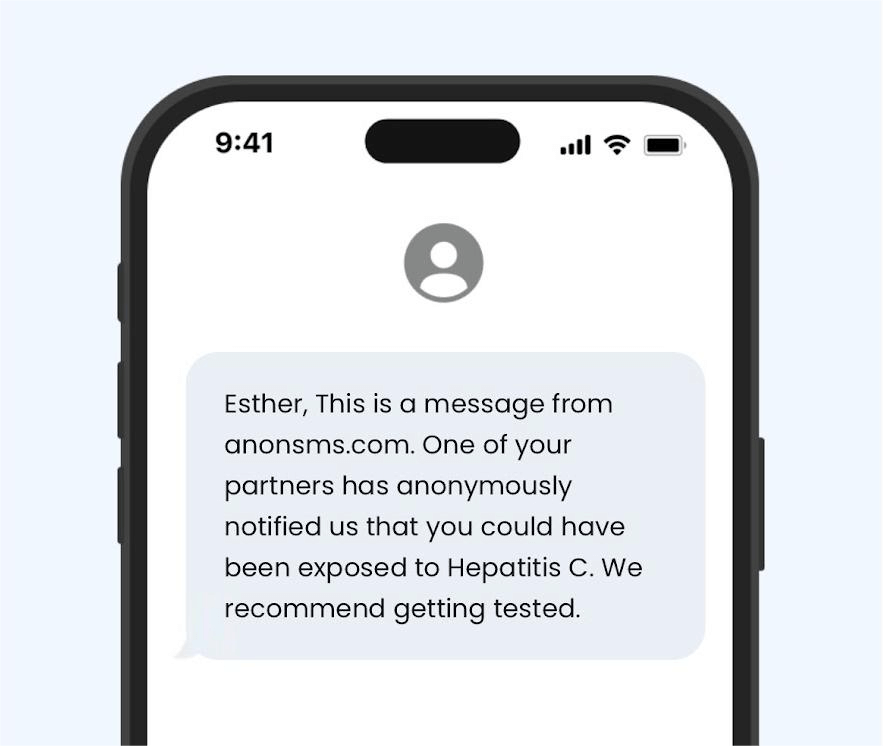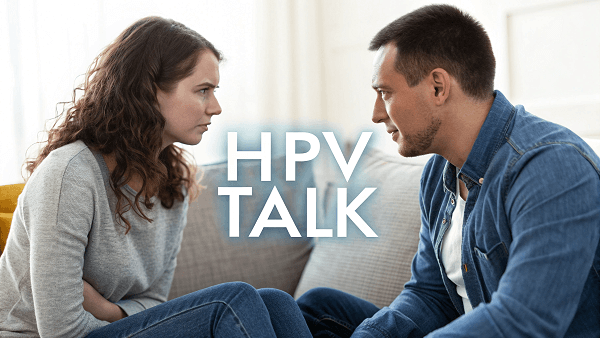Обнаружить у себя ЗППП и рассказать об этом своему партнеру — одна из самых сложных ситуаций, в которой кто-либо может оказаться. Но хотя это может быть сложно, это ответственный шаг, который вы должны предпринять. Это касается не только ваших отношений. Рассказав партнеру, вы позволяете ему пройти тестирование и лечение (в случае положительного результата) и не даете ему неосознанно распространять болезнь среди других людей.
Основная проблема в большинстве случаев заключается в том, как дать знать своему партнеру. Вы начинаете задавать себе вопрос о том, стоит ли поговорить с ним лицом к лицу, отправить текстовое сообщение/электронное письмо или сообщить ему анонимно. Каждый подход может сработать, но зависит от ваших отношений и уровня комфорта.
В этом руководстве мы расскажем вам как о прямых, так и о анонимных способах уведомления партнера, помогая вам выбрать подход, который подходит именно вам.
Почему не стоит обсуждать, стоит ли рассказывать обо всем партнеру
Информирование вашего партнера о ЗППП необходимо по многим критическим причинам, которые влияют на вас обоих и даже на общественность. Ниже приведены 3 основные причины, по которым вы должны сообщить об этом своему партнеру:
- Их здоровье
Хотя вы можете думать, что ваш партнер здоров и находится в безопасности, поскольку у него/нее нет никаких симптомов, это может быть просто бессимптомное ЗППП. Это означает, что ваш партнер может быть инфицирован, не зная об этом. Иногда ЗППП остаются и тихо растут в организме, не проявляя никаких признаков.
Таким образом, без своевременного тестирования и лечения ваш партнер сталкивается с серьезным риском для здоровья, включая долгосрочные осложнения, такие как бесплодие, хронические боли и повышенная уязвимость к другим заболеваниям. Раннее выявление и лечение могут предотвратить эти разрушительные последствия и обеспечить благополучие вашего партнера.

- Ваше здоровье
Ваше собственное здоровье также зависит от этого ответственного действия. Лечить только себя не означает, что вы в безопасности. Как было сказано ранее, ваш партнер может быть инфицирован без ведома кого-либо из вас, поэтому, лечась и оставляя его/ее, вы подвергаете себя риску повторного заражения. Этот цикл может продолжаться бесконечно, продлевая ваше выздоровление и потенциально приводя к серьезным осложнениям для здоровья.
- Остановка распространения
Помимо личного здоровья, предотвращение передачи другим людям является важной обязанностью общественного здравоохранения. Как и COVID, некоторые ЗППП (такие как хламидиоз, гонорея и сифилис) являются заболеваниями, подлежащими регистрации. Это означает, что вы должны уведомить своих сексуальных партнеров и Департамент здравоохранения в вашей юрисдикции, если у вас есть эти заболевания. Это помогает контролировать и отслеживать вспышки и управлять общими эпидемиями.
Если не лечить ЗППП быстро, они могут распространяться по сексуальным сетям со скоростью лесного пожара. Разрывая эту цепь, вы защищаете не только своего непосредственного партнера, но и общественность, включая ваших близких, соседей и будущих партнеров.
Расскажите своему партнеру через прямую связь
Это подразумевает личное сообщение вашему партнеру о вашем статусе ЗППП, будь то через личный разговор, телефонный звонок, текстовое сообщение или электронную почту. Этот метод позволяет личное раскрытие информации и создает возможность для немедленного диалога и поддержки.

- Лицом к лицу/по телефону
Личные или телефонные разговоры могут быть очень хорошей идеей, когда вы хотите увидеть эмоциональную реакцию вашего партнера. Но в таких случаях это не всегда так. Вы можете бояться того, как он отреагирует, или стесняться сообщать такие новости. Однако этот подход позволяет установить полную эмоциональную связь, прочесть язык тела/голос и немедленно честно поговорить о своих опасениях и о следующих шагах.
- Текст/электронная почта (самостоятельно отправленная)
Текстовые сообщения или электронная почта служат альтернативой прямым сообщениям, когда личные или телефонные разговоры кажутся слишком подавляющими. Глубокий вдох перед набором SMS или электронного письма позволяет вам тщательно продумывать слова и общаться, не прерываясь и не видя обидного лица вашего партнера. Этот подход также позволяет вашему партнеру обработать информацию, прежде чем ответить.
Однако следите за своим тоном, поскольку письменные сообщения могут быть легко неверно истолкованы. Желательно использовать слова, которые выражают заботу и беспокойство.
Плюсы прямого общения
- Позволяет вести диалог.
- Может укреплять доверие и прозрачность.
- Дает возможность для немедленных вопросов, ответов и эмоциональной поддержки.
Минусы прямого общения
- Эмоционально сложно и требует большого мужества.
- Управление реакциями может быть сложным. Скорее всего, ваш партнер рассердится, испугается, будет отрицать или обвинит вас.
Отправьте анонимное уведомление, чтобы уведомить своего партнера
Если вам не комфортно рассказать своему партнеру о ЗППП диагноз через прямое общение, вы все равно можете сообщить им об этом через анонимного поставщика уведомлений о ЗППП. Этот подход идеален в случаях, когда вы боитесь, беспокоитесь о своей безопасности, имеете только случайные отношения (например, на одну ночь) или просто предпочитаете сохранить свою личность в тайне.
В сети много анонимных инструменты уведомления партнеров Для этой цели можно использовать, например:
- Дайте им знать: А бесплатная услуга уведомления о ИППП для жителей Австралии. Эта служба обмена сообщениями была разработана Мельбурнским центром сексуального здоровья и поддержана правительством Австралии, чтобы помочь людям уведомить своих партнеров о диагнозе ЗППП с помощью анонимных СМС или электронной почты.
- Драма в Австралии: В основном для геев, бисексуалов и других мужчин, которые имеют сексуальную близость с мужчинами. Он предлагает всесторонние услуги в плане просвещения по ЗППП/ИППП, симптомов, тестирования и профилактики. Эта бесплатная онлайн-служба ЗППП также позволяет вам анонимно сообщить своему партнеру, что он мог быть подвержен заболеванию.
- Лучше знать: Эта услуга уведомления о ЗППП/ИППП в основном доступна австралийцам. Она ориентирована на аборигенов и жителей островов Торресова пролива. Несмотря на то, что у них разные культуры, эта анонимная услуга ЗППП объединяет их, защищая идентичность и позволяя информировать своих партнеров о своем статусе ЗППП.
- TellYourPartner: Это один из продуктов, предлагаемых Anonsms, который является инструментом для отправки конфиденциальных сообщений. TellYourPartner выделяется среди других конфиденциальных сервисов, поскольку позволяет вам отправлять анонимные сообщения о ЗППП людям по всему миру без проблем. Он также предлагает массовую рассылку SMS, что позволяет вам отправлять сообщение нескольким партнерам одновременно, независимо от их местонахождения.

Возможно, вы не хотите быть непосредственно вовлечены в оповещение; вы можете обратиться за помощью к врачу/в клинику. Это называется «отслеживание контактов.» Это помощь в области общественного здравоохранения, когда медицинские работники анонимно информируют ваших партнеров от вашего имени и разъясняют им необходимость пройти тестирование.
Неважно, как вы их информируете: ознакомьтесь с этими советами!
Независимо от того, выбираете ли вы прямое или анонимное общение, есть некоторая важная информация, которую необходимо эффективно передать, чтобы гарантировать, что ваш партнер предпримет немедленные действия. Это:
- Поощряйте тестирование в качестве следующего действия. Даже если ваш партнер чувствует себя хорошо, есть вероятность, что он может быть инфицирован, но пока без видимых признаков. В своем уведомлении укажите точный тип ЗППП, который у вас диагностировали, и сообщите партнеру, что сдача теста — единственный способ узнать его статус.
- Не просто предполагайте, что они знают, где пройти тестирование. Предоставьте информацию о местах тестирования, где они могут пройти тестирование, лучшие советы по здоровью и лечению. Вы можете направить их в местные отделы здравоохранения, Клиники планирования семьи, или их лечащий врач. Они также могут проверить Ближайшие центры тестирования на ЗППП CDC.
- Поделитесь фактами о лечении, чтобы уменьшить их беспокойство и стигматизацию. Подчеркните, что большинство ЗППП полностью излечимы, и хорошо, что их предупреждают рано, поэтому излечение будет быстрым. Также скажите, что многие методы лечения включают простые процедуры, такие как всего лишь одна доза антибиотиков или короткий курс лекарств.
Поскольку вы начали лечение, вы можете дать практические рекомендации о том, чего ожидать и как важно избегать сексуальной активности, пока врач-эксперт не скажет, что все в порядке. Они также должны расширить ответственность, говоря своим сексуальным партнерам о необходимости пройти тестирование.

 Anonsms
Anonsms
 Джентель
Джентель




